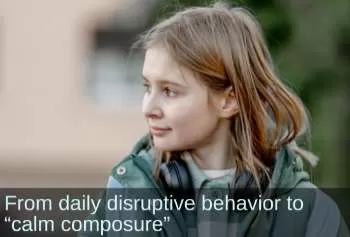Primitive Reflex Integration Case Studies
Life-Changing Strides in Gross-Motor Skills, Visual Processing, and Participation in School
Rhythmic movements and primitive reflex integration provide help for gross motor skills, visual tracking, and fidgeting.
This OT was able to help her 10-year-old client with a combination of rhythmic movements, primitive reflex inegration, and other tools from the Brain and Sensory Foundations program. The result? She is able to sit still for longer stretches in class (easier learning and better participation in class), more accurate visual tracking and convergence, and improved gross motor skills!
Submitted by Theresa Rafferty, COTA/L

| Before | After |
|---|---|
| Daily disruptive behavior in the classroom; aggressive behavior toward school staff | Significantly less disruptive in classroom and able to sit in a classroom chair and work on presented tasks for 10+ min consecutively |
| Challenges with visual tracking | Increased accuracy when completing visual tracking and convergence exercises |
| Significant challenges in complex motor patterns, crossing mid-line, and asymmetrical movements | Can accurately and consistently complete “cross crawl”; demonstrating an emerging skip pattern |
Payton is a 10-year-old girl who has a history of ADHD, emotional dysregulation, impulsivity, mild aggression, and unconfirmed, yet most likely, drug exposure in utero. She presented with daily disruptive behavior in the classroom and outbursts that included aggressive behavior towards school staff. Payton also presented with significant challenges in complex motor patterns, crossing mid-line and asymmetrical movements were nearly impossible for her to complete.
I began working with Payton immediately after feeling comfortable applying the Rhythmic Movements (RM) and PACE Tune Up [from the Brain and Sensory Foundations course]. She presented as cooperative though her body was very stiff with resistive and “jerky” movements, especially with RM #3 in prone position. We met every morning, just after she arrived at school, completing approximately 10-15 minutes of RM and PACE Tune Up, then she returned to class. I encouraged her teacher and support staff to keep me updated on any changes they saw in the next few weeks. Within 2 days, positive reports were made in regards to her calm composure after returning to class and overall improvement in mood.
At two weeks, Payton continued to present with some stiffness with RM #3 with continued positive reports from staff regarding behavior and general demeanor. Several times throughout the week, staff would request an additional RM session to improve functional participation throughout the remainder of the school day. Staff training was provided to increase availability of RM as needed. Just after the two-week mark, Payton was shocked at herself and so incredibly proud to accurately and consistently complete “cross crawl” when working through the Brain Tune Ups! She has also begun to demonstrate an emerging skip pattern when working on gross motor skills!
As summer break approached, Payton’s guardians were trained on RM to continue while school was out. I’m not sure how often this was completed over the summer but when school resumed this past August, Payton’s first question was “are we going to rock again?” (She referred to RM as “rocking’ during our sessions.) Refresher training was completed with staff so they could implement RM as my schedule didn’t allow for daily sessions.
This school year, Payton presented with an increased ability to follow verbal instructions and complete ATNR [Asymmetric Tonic Neck Reflex] integration accurately with some hand over hand assistance to achieve appropriate positions.
We have been working through ATNR integration [from the Brain and Sensory Foundations course] with Payton demonstrating an increased ability to sit in a classroom chair and work on presented tasks for 10+ min consecutively, developmental visual skills have improved as demonstrated through increased accuracy when completing tracking and convergence exercises, and Payton is significantly less disruptive in classroom. Teacher reports an overall improvement in Payton’s ability to participate in classroom routine and attend to assignments. Improvements in visual tracking skills documented with completion of the 5-Step Balance Process [from the Brain and Sensory Foundations course]: Payton started [to be able] to separate eye-head movements and currently is able to complete 3-4/10 repetitions tracking a moving object accurately!
I am planning on moving on through the remaining reflexes, anticipating many more improvements and achievements in Payton’s future!
[Edited for length and clarity, emphasis added]
*Disclaimer: The activities in the Brain and Sensory Foundations curriculum make use of the natural processes of neuroplasticity and development that are innately wired in the design of human beings to promote maturity and function. These activities appear to calm, organize, and mature the neuro-sensory-motor systems just as we see in the healthy development of human infants. Individual results may vary, and we do not claim to offer a diagnosis or cure for any specific condition or disorder. The Brain and Sensory Foundations activities appear to improve overall functioning resulting in measurable improvements for a range of conditions as demonstrated in over 1800 case studies from participants.

